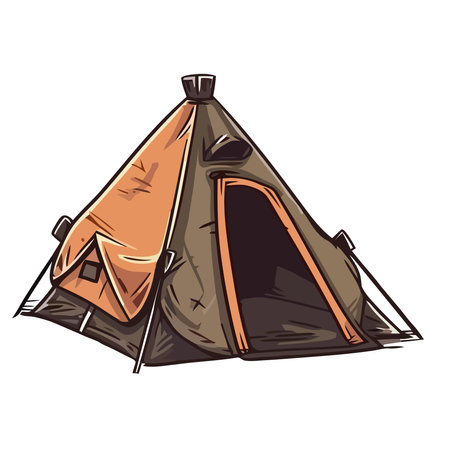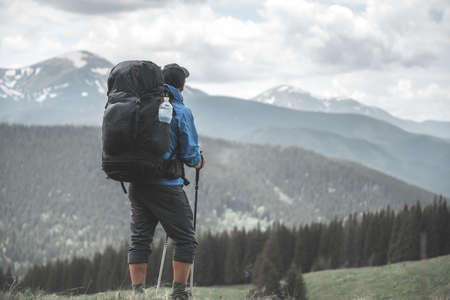1. Understanding Down and Synthetic Insulation
When youre shopping for a sleeping bag, one of the biggest decisions youll face is choosing between down and synthetic insulation. Both have their pros and cons, and understanding what theyre made of—and how they keep you warm—can help you make the right choice for your camping adventures.
What Is Down Insulation?
Down insulation comes from the soft under-feathers of ducks or geese. Its known for being extremely lightweight, compressible, and incredibly warm. Down traps heat by creating thousands of tiny air pockets that retain body warmth. The higher the fill power, the better the insulation quality—meaning more warmth with less weight.
Pros of Down:
- Excellent warmth-to-weight ratio
- Packs down small—great for backpacking
- Long lifespan if properly cared for
Cons of Down:
- Loses insulating power when wet
- Typically more expensive than synthetic
- May require special care when cleaning
What Is Synthetic Insulation?
Synthetic insulation is made from polyester fibers designed to mimic downs loft and insulating ability. It works by trapping warm air in pockets between the fibers. Unlike down, synthetic materials still insulate when wet, making them a popular choice for damp environments.
Pros of Synthetic:
- Performs better in wet conditions
- Generally more affordable
- Easier to clean and maintain
Cons of Synthetic:
- Heavier and bulkier than down
- Tends to lose loft faster over time
- Less packable—takes up more space in your backpack
Side-by-Side Comparison: Down vs Synthetic
| Feature | Down Insulation | Synthetic Insulation |
|---|---|---|
| Warmth-to-Weight Ratio | Excellent | Good |
| Performance When Wet | Poor (unless treated) | Good |
| Packing Size | Very Compressible | Larger Pack Size |
| Lifespan | Long (with care) | Shorter Over Time |
| Cost | Higher Price Point | More Budget-Friendly |
| Care Requirements | Special Cleaning Needed | Easy to Wash at Home |
This breakdown gives you a clearer look at how these two types of insulation work and what to expect from each. Whether youre gearing up for a backcountry trek or a casual car camping trip, knowing the differences helps you pick the best sleeping bag for your needs.
2. Warmth-to-Weight Ratio: Which Packs Better?
When youre backpacking or thru-hiking, every ounce matters. Thats why the warmth-to-weight ratio of your sleeping bag is a big deal. This simply means how warm a sleeping bag keeps you compared to how much it weighs. Let’s break down how down and synthetic insulation compare in this department.
Down Sleeping Bags: Lightweight and Super Warm
Down insulation, made from the fluffy undercoating of ducks or geese, is known for being incredibly efficient at trapping heat while staying lightweight. Its highly compressible, meaning it packs down really small—perfect for ultralight backpackers or anyone trying to save space in their pack. High-quality down (like 800-fill or higher) offers more warmth per ounce than any synthetic option.
Pros:
- Excellent warmth-to-weight ratio
- Packs down very small for easy storage
- Long-lasting with proper care
Cons:
- Loses insulation power when wet unless treated with water-resistant coatings
- Usually more expensive upfront
Synthetic Sleeping Bags: Reliable in Wet Conditions
Synthetic bags use man-made fibers designed to mimic the insulating properties of down. While they’re generally heavier and bulkier than down bags, they perform better in wet conditions. Even when damp, synthetic insulation continues to trap heat, making it a safer choice in rainy or humid environments.
Pros:
- Insulates even when wet
- More affordable than down bags
- Dries faster if it gets soaked
Cons:
- Heavier and bulkier than down
- Tends to wear out faster over time
Quick Comparison Table
| Feature | Down Sleeping Bag | Synthetic Sleeping Bag |
|---|---|---|
| Warmth-to-Weight Ratio | Excellent – Best available | Good – Heavier for same warmth level |
| Packing Size | Very compact | Larger packed size |
| Performance When Wet | Poor unless treated with DWR coating | Good – Retains warmth when wet |
| Lifespan | Long-lasting with care | Shorter lifespan over time |
| Price Range | Higher cost ($$$) | More budget-friendly ($$) |
If youre planning long-distance hikes like the Pacific Crest Trail or Appalachian Trail, weight and packability are huge factors. Down sleeping bags are usually the go-to for serious thru-hikers looking to shave off ounces. But if you’re heading into wetter climates or on shorter trips where budget is key, a synthetic bag might be your best bet.

3. Performance in Wet Conditions
When youre camping in places where the weather can turn on a dime—like the Pacific Northwest or the Rockies—how your sleeping bag handles moisture can make or break your trip. Let’s take a look at how down and synthetic sleeping bags perform when they get wet.
Down Sleeping Bags: Lightweight but Vulnerable
Down insulation is famous for being ultra-light and super warm. But heres the catch: when down gets wet, it loses most of its insulating power. The feathers clump together, trapping less air and leaving you cold and damp. Even with hydrophobic (water-resistant) treatments, down still struggles in very humid or wet conditions unless its kept bone-dry in a waterproof sack.
Synthetic Sleeping Bags: Moisture-Resistant Champs
Synthetic insulation, usually made from polyester fibers, holds up much better in wet conditions. Even when damp, synthetic fill continues to provide warmth because the fibers don’t absorb water like down does. It also dries faster, which is a big bonus if you’re out for multiple nights without access to drying gear.
Quick Comparison Table
| Feature | Down | Synthetic |
|---|---|---|
| Insulation When Wet | Poor – loses loft and warmth | Good – retains warmth even when damp |
| Drying Time | Slow | Fast |
| Mildew Resistance | Low – can develop odors if not dried quickly | High – resists mildew better |
| Suits Wet Climates? | No – needs careful storage and protection | Yes – more forgiving in variable weather |
The Bottom Line on Wet Weather Performance
If youre planning trips where rain or humidity are common, a synthetic sleeping bag might be your best bet. Its more forgiving when things get damp and keeps you warmer in less-than-ideal conditions. Down still has its place, especially for dry environments or ultralight backpacking—but you’ll need to be extra cautious about keeping it dry.
4. Durability and Maintenance
When youre investing in a sleeping bag, its important to think about how long it will last and how much effort it takes to keep it in good shape. Both down and synthetic sleeping bags have their pros and cons when it comes to durability and maintenance.
How Long Do They Last?
Down sleeping bags are known for their longevity. With proper care, a quality down bag can last 10 years or more. The natural loft of down can bounce back over time if its stored correctly and not compressed for too long. On the other hand, synthetic sleeping bags usually have a shorter lifespan—typically around 5 to 7 years—because the synthetic fibers break down faster with repeated use and washing.
Cleaning and Care
When it comes to cleaning, synthetic bags take the win for ease. You can usually toss them in a front-loading washer with mild detergent and air-dry them without too much hassle. Down bags require more delicate handling. Washing a down bag involves special detergents (down-safe soap), careful drying (usually in a dryer with tennis balls to restore loft), and sometimes professional cleaning to avoid damaging the insulation.
Upkeep Tips
Proper storage is key for both types. Never store your sleeping bag compressed in its stuff sack long-term. Instead, hang it up or store it loosely in a large cotton or mesh storage bag. This helps maintain loft and performance.
Durability & Maintenance Comparison
| Feature | Down Sleeping Bag | Synthetic Sleeping Bag |
|---|---|---|
| Lifespan | 10+ years (with proper care) | 5–7 years |
| Ease of Cleaning | More difficult; requires special detergent and careful drying | Easier; machine washable and air-dry friendly |
| Storage Needs | Store uncompressed; best hung or in large breathable bag | Same as down: avoid long-term compression |
| Resistance to Wear | Less resistant to moisture and rough use | More durable in wet or rugged conditions |
If youre someone who camps often in rough or wet environments, you might prefer the low-maintenance durability of synthetic bags. But if youre looking for long-term performance and dont mind a little extra care, down could be worth the investment.
5. Cost and Environmental Impact
When choosing between down and synthetic sleeping bags, your budget and environmental values can play a big role. Both types have their pros and cons when it comes to price and how they affect the planet.
Price Comparison
Generally speaking, down sleeping bags are more expensive than synthetic ones. The higher cost comes from the natural materials and the more involved manufacturing process. However, you’ll also find that high-end synthetic bags can sometimes rival the price of mid-range down bags depending on features and brand.
| Type | Average Price Range (USD) |
|---|---|
| Down Sleeping Bags | $200 – $600+ |
| Synthetic Sleeping Bags | $50 – $300 |
Environmental Considerations
Down is a natural material, typically sourced from ducks or geese. While it’s biodegradable and long-lasting, there are concerns about animal welfare. Reputable brands often use RDS (Responsible Down Standard) certified down to ensure ethical sourcing.
Synthetic insulation is made from petroleum-based products like polyester. While its not biodegradable, some brands are now using recycled materials to lessen their environmental footprint. Synthetic bags also require more energy to produce compared to down.
Quick Look at Sustainability Factors
| Factor | Down | Synthetic |
|---|---|---|
| Biodegradable | Yes | No |
| Animal Welfare Concerns | Yes (unless RDS-certified) | No |
| Made from Recycled Materials | Rarely | Often available |
| Energy to Produce | Lower | Higher |
| Lifespan with Proper Care | 10+ years | 5–10 years |
If youre trying to minimize your carbon footprint, look for brands that offer sustainable options, whether its recycled synthetic fill or ethically sourced down. Your wallet and the planet will thank you in the long run.
6. Choosing the Best Fit for Your Camping Style
When picking between down and synthetic sleeping bags, one size definitely doesnt fit all. The best choice really depends on how you like to camp. Whether youre heading out for a laid-back weekend at a state park or trekking deep into the backcountry, each type of insulation has its strengths. Heres how to match your sleeping bag to your camping style:
Casual Weekend Campers
If youre the kind of camper who enjoys car camping or short trips during fair weather, a synthetic sleeping bag could be your best bet. Theyre generally more affordable, easier to clean, and still perform well in damp conditions — perfect for family trips or spontaneous weekend getaways.
Backpackers and Hikers
For those who are counting every ounce in their pack, down sleeping bags are hard to beat. They’re super light and pack down small, making them ideal for long-distance hikers and minimalist adventurers. Just make sure to keep them dry — a wet down bag loses its insulating power fast.
Cold Weather Adventurers
If winter camping or alpine excursions are your thing, high-quality down is usually the top choice because of its superior warmth-to-weight ratio. However, some synthetic bags designed for extreme cold can also hold their own, especially if you expect moisture from snow or condensation.
Budget-Conscious Campers
Synthetic bags win here hands-down. They offer solid performance without breaking the bank and are durable enough for occasional use. If you don’t need ultralight gear or extreme cold protection, there’s no need to overspend.
Quick Comparison Guide
| Camper Type | Recommended Insulation | Why It Works |
|---|---|---|
| Casual Weekender | Synthetic | Affordable, low-maintenance, handles moisture well |
| Ultralight Backpacker | Down | Packs small, lightweight, excellent warmth-to-weight ratio |
| Cold Weather Camper | Down (or High-End Synthetic) | Keeps you warm in freezing temps; synthetic can handle moisture better |
| Bargain Hunter | Synthetic | Cost-effective and durable for occasional use |
The key is to think about what kind of camping you do most often. Once you figure that out, choosing between down and synthetic becomes a whole lot easier.

